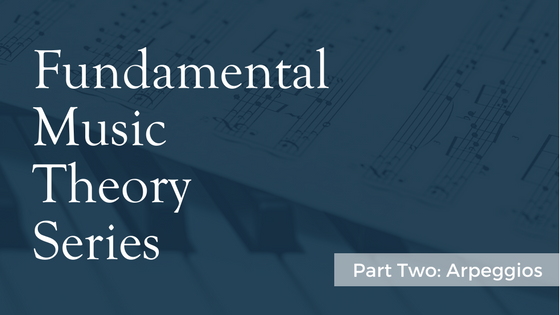Last week we spoke about a bit about the E minor scale as it relates to my music. This week we are going to briefly talk about arpeggios because mastering them will help you master my songs, as all my songs contain arpeggios in varying degrees, configurations and keys.
The word arpeggio is actually Italian and it means ‘broken chord’. It is also part of a scale. So if you remember, an E minor scale looks like this…

An E minor arpeggio uses some of the notes in the E minor scale and can look like this below…


The left hand in the bass clef is using the notes E G B. Then moves into the treble clef again of E G B E B G. Then back to the bass clef of E B G E.
In other words, it is using the first, third and fifth degree of the scale. Remember those scale degrees using Roman numerals we talked about last week? Here it is again to refresh your memory…

E or i is the tonic or root of the scale.
F# ii Supertonic
G III Mediant
A iv Subdominant
B V Dominant
C VI Submediant
D VII Leading Tone
E i back to the tonic or root of the scale (an octave above the starting point)
Well the arpeggio is using…
E or i is the tonic or root of the scale.
G III Mediant
B V Dominant
Play each note separately and it becomes a broken chord, or an arpeggio. Playing these three notes together makes a basic E minor triad chord like this…

I have multiple songs that are based off of E minor arpeggios, including…
So if you want to learn these songs smoothly, practice your E minor arpeggios! Play the hands separately. Left hand, then right hand. Playing just one octave. Then play them one octave hands together. After you can play both hands in one octave then start playing two octaves. Before you know it you can play E minor arpeggios in both hands using the full range of the keyboard.
Keep practicing and next week I’ll cover another music theory fundamental as it relates to my music.
Philip Wesley
Solo Piano Artist
philipwesley.com



